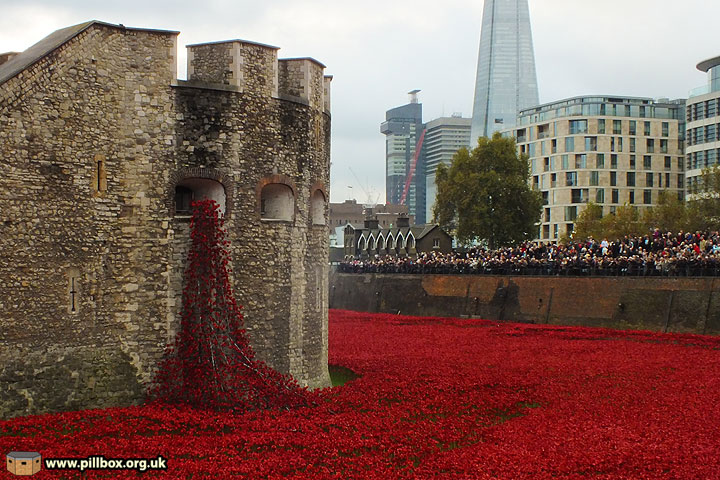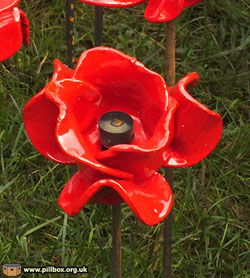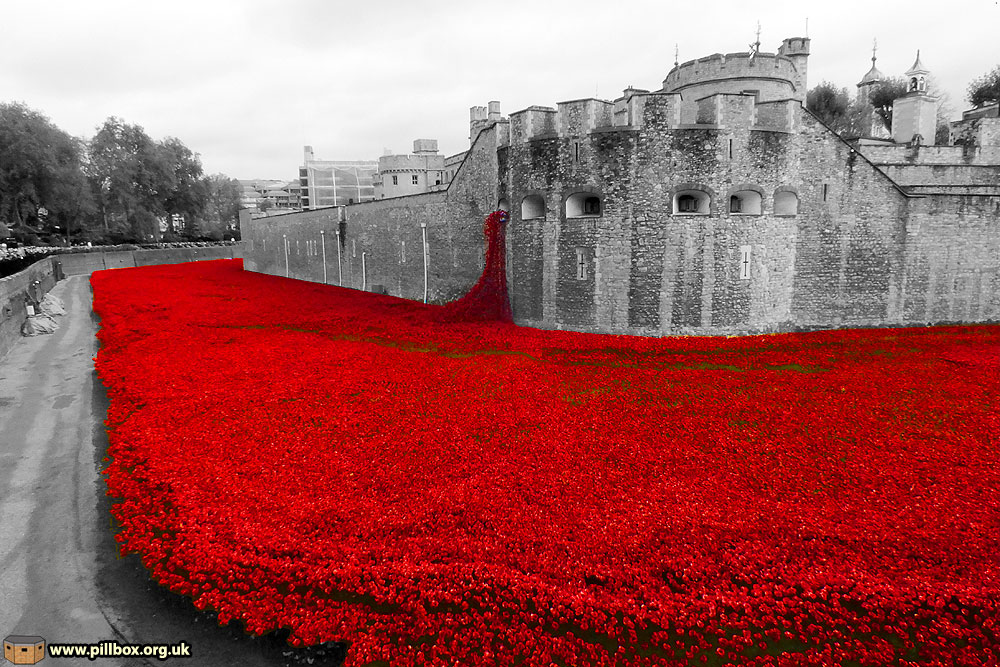In Remembrance
Posted: 8 November 2014 20:06
This year has been dominated by the start of the Great War Centenary commemorations. A key event was the installation of 888,246 poppies in the moat of the Tower of London, which I recently had the pleasure of visiting.
Blood Swept Lands and Sea of Red by artist Paul Cummins has been an outstanding success, with four million people estimated to have visited it so far - that's more than visit the London Eye in a year. The hand-made ceramic poppies, each one representing a British fatality, have been positioned by volunteers over a period of four months.
The photo below gives you a sense of the scale; a full gallery can be viewed at the bottom of the page.

The art installation has not been without criticism though. A rather negative piece written by art critic Jonathan Jones states:
It is deeply disturbing that a hundred years on from 1914, we can only mark this terrible war as a national tragedy. Nationalism - the 19th-century invention of nations as an ideal, as romantic unions of blood and patriotism - caused the great war. What does it say about Britain in 2014 that we still narrowly remember our own dead and do not mourn the German or French or Russian victims?
....In spite of the mention of blood in its title, this is a deeply aestheticised, prettified and toothless war memorial. It is all dignity and grace. There is a fake nobility to it, and this seems to be what the crowds have come for - to be raised up into a shared reverence for those heroes turned frozen flowers.
I won't get bogged down in everything I find objectionable in these comments, but Mr. Jones' alternative would have been to fill the moat with "barbed wire and bones" - something that would be "gory, vile and terrible to see", citing the work of German artist Otto Dix as an example.
I don't regard dignity as a tool for prettifying war and obscuring its horror. On the contrary, our dignified Remembrance today brings into sharp focus the sheer lack of dignity suffered by those who were there. Those who returned tried themselves to conceal the full horror - they didn't talk about it - even though their loved ones could never understand it, they probably saw it in their broken bodies, shattered minds and distant souls.

To see the statistic 888,246 printed on a page is one thing - to see it represented in terms of space is completely another - and it hit me as I turned each corner of the moat walkway. The poppies just went on and on.
And to me, this is where the "horror" that some think we need, exists.
Each poppy was a life lost.
Each life lost represents a family overcome by grief.
Amongst these poppies we can instantly see how so many communities would have been devastated and how our nation suffered as a result of this terrible conflict. Four million people came to see, and become part of, this act of Remembrance. And before I get accused of nationalism, (and I know for a fact that not all of the four million visitors were British), simply look at these poppies and add another stretch of moat for the impact on France, and nearly double the total amount for German or Russian deaths.
The crowds of people turned a static art installation into a moving performance; a slow shuffle as thousands collectively grieved for a lost generation. What struck me was the selflessness of all present; a polite request to be allowed to come to the front of the railings was met with an equally polite invitation to do so. None of the usual pushing and shoving one experiences in a crowd in any other situation. The gravity of Remembrance had a powerful grip on all those present; I felt as though I could turn to anyone in the crowd and talk to them as a friend and I had several conversations about what we were seeing and what it meant.
Portraying the full horror of the trenches might shock people, but for me, although poppies are a symbol of Flanders, "barbed wire and bones" represents the conditions in predominantly one theatre, on land, in a global conflict that wasn't all trench warfare.
The horror of war is the human cost, and blood-red poppies representing lives lost transcends all theatres and all conflicts.
I feel this poppy display has proved to be the most moving and appropriate method of Remembrance - if this doesn't put across the horror and tragedy of war, then I don't know what will.

- Pete

Email:
Blog Latest

Bishopstone reveals its pillbox secrets
18 October 2021

Pillbox or Observation Post?
10 June 2020

Uncovering the hidden secrets of a pillbox
8 June 2019

Review of 2018
31 December 2018

Wartime Christmas in East Sussex (2)
24 December 2018
Jargon-buster
No terms to describe
This site is copyright © Peter Hibbs 2006 - 2024. All rights reserved.
Hibbs, Peter In Remembrance (2024) Available at: http://www.pillbox.org.uk/blog/216742/ Accessed: 18 April 2024
The information on this website is intended solely to describe the ongoing research activity of The Defence of East Sussex Project; it is not comprehensive or properly presented. It is therefore NOT suitable as a basis for producing derivative works or surveys!